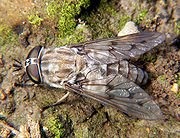3. The level sea in the season when the Kingfisher is nesting sounds very much like the level land which the kuhane of Hau Maka searched for: ... The dream soul came to Rangi Meamea and looked around searchingly. The dream soul spoke: 'Here at last is level land where the king can live.' Where a new house is to be built the land should be level or the construction will be difficult. And in the 'morning of the world' there is nothing but water, yet a new house must be built for the gods: ... In the morning of the world, there was nothing but water. The Loon was calling, and the old man who at that time bore the Raven's name, Nangkilstlas, asked her why. 'The gods are homeless', the Loon replied. 'I'll see to it', said the old man, without moving from the fire in his house on the floor of the sea. Then as the old man continued to lie by his fire, the Raven flew over the sea. The clouds broke. He flew upward, drove his beak into the sky and scrambled over the rim to the upper world ... The horizontal surface corresponds to a solstice, when all should be still, even the waves of the sea. "I have twice (with an interval of many years) seen a halcyon skimming the surface of the same Mediterranean bay, on both occasions about midsummer, when the sea was without a ripple: its startingly bright blue and white plumage made it an unforgettable symbol of the Goddess of calm seas." (The White Goddess)
There are two solstices and at both places the weather should be calm. "Pliny, who carefully describes the halcyon's alleged nest - apparently the zoöphyte called halcyoneum by Linnaeus - reports that the halcyon is rarely seen and then only at the winter and summer solstices and at the setting of the Pleiades. This proves her to have originally been a manifestation of the Moon-goddess who was worshipped at the two solstices as the Goddess of alternatively Life-in-Death and Death-in-Life - and who early in November, when the Pleiades set, sent the sacred king his summons to death." (The White Goddess) If a solstice means Sun is still it suggests he is dead, and then of course Moon must be the ruler. The King was summoned to death in early November. The Hawaiian Makahiki ceremonies also depended on the Pleiades: ... in the ideal ritual calendar, the kali'i battle follows the autumnal appearance of the Pleiades, by thirty-three days - thus precisely, in the late eighteenth century, 21 December, the winter solstice. The king returns to power with the sun ... Perhaps 33 days earlier than winter solstice is to be found also in the G text. We have two main alternatives for winter solstice (north of the equator):
319 (at Gb3-28) - 33 = 286 and 314 (at Gb3-23) - 33 = 281:
We have earlier found that the beginning of the winter half of the year evidently is characterized by the takaure glyph type, and by counting from Rogo in Gb6-26 we find the arrival of takaure after 12 * 29½ days. The sad state of the neck in Gb2-30 agrees with the idea of the Sun King here being summoned to death by the return of the Pleiades in the evening.
Sun will at 'sundown' change into a mummy-like 'insect', a takaure (horse-fly). What better image to use on Easter Island where there were no horses - how else should a winged horse (Pegasus) be accounted for:
To complete the pattern of Alcyone we should also search for her at noon. If I reduce 319 with 182 the result is 137, the number of Ga5-26:
By multiplying quite interesting products are generated, e.g 52 * 5 = 260 and 52 * 7 = 364. |
||||||||||||||||||||||||||||||||||||||||||||||||||||||||||||||||||||||||||||||||||||||||||||||||||||||||||||||||















